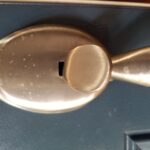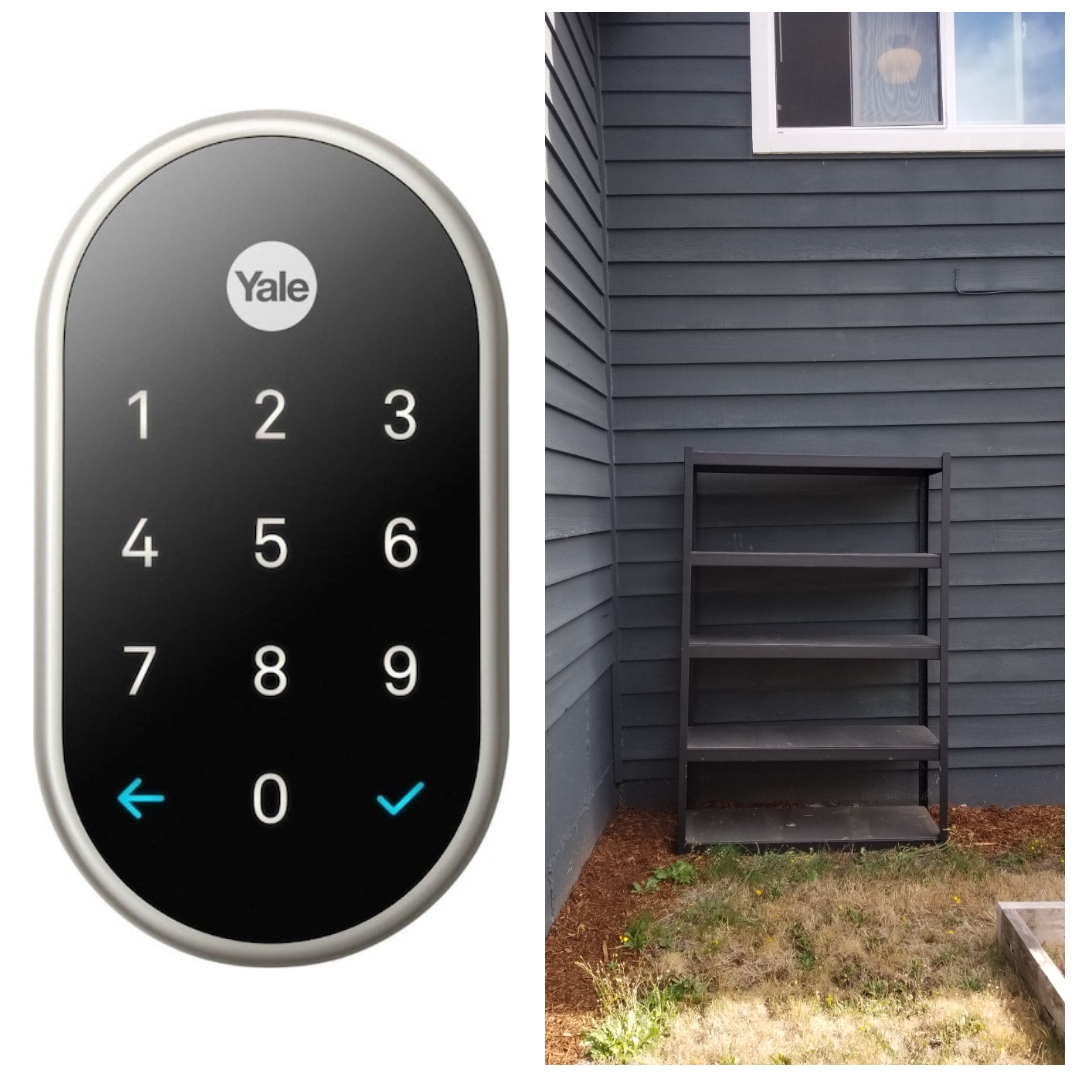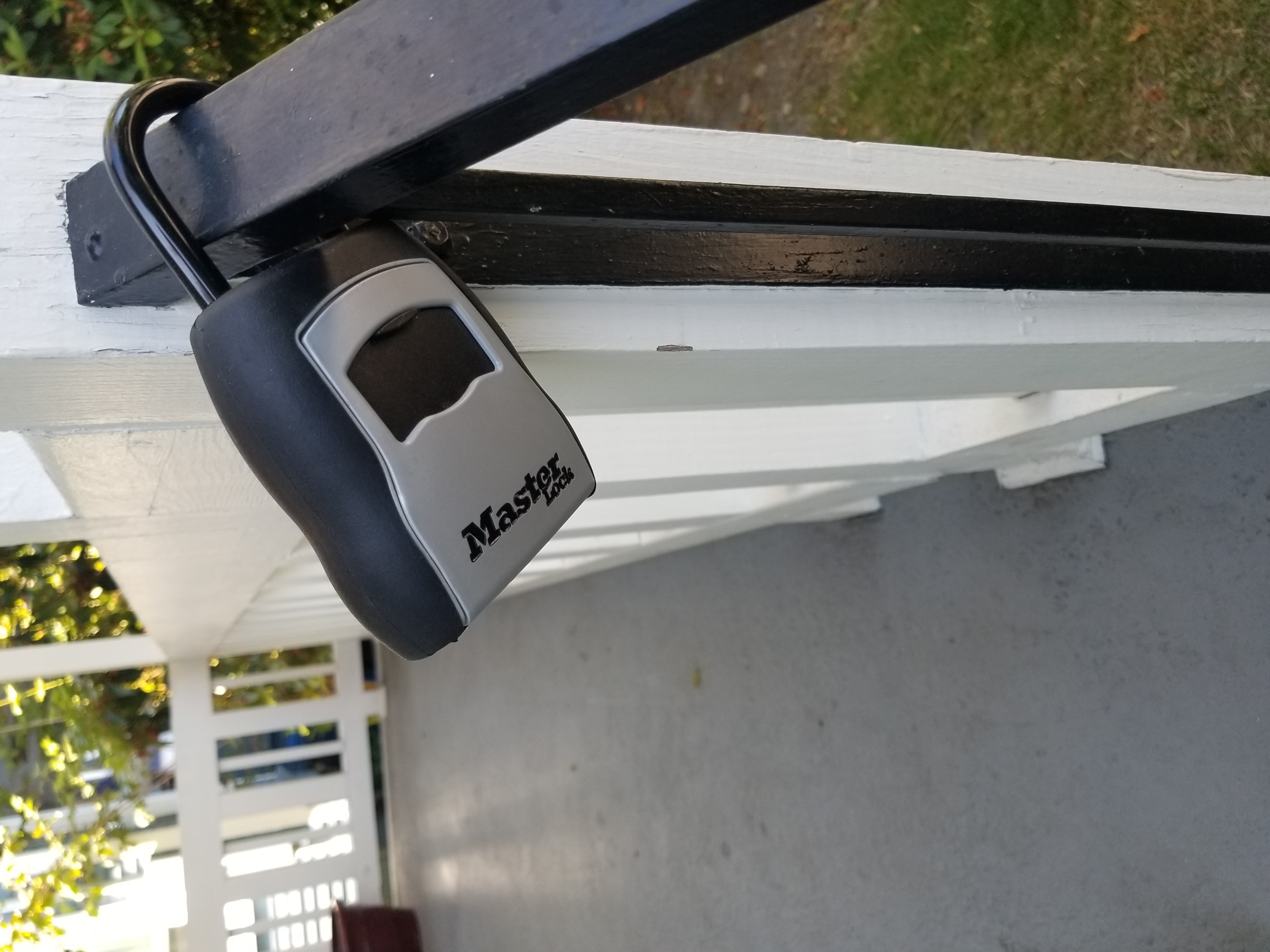Last week I got a call from a customer in Bothell who was locked out of his house. I happened to be ahead of schedule so I agreed to squeeze him into my day. “Please get here as quickly as you can,” he said. Of course I would. I always drive like I’m late for my own wedding. This is one reason I leave my logo off of my van.
When I arrived at the house I encountered a pudgy bespectacled guy in his early twenties wearing gym shorts and a t-shirt. He looked a little like Drew Carey in the 1990s. A Tesla was sitting inside the open garage. He pointed to the door he wanted me to open. I asked him for ID. He pulled at both sides his gym shorts and shrugged, indicating he had nothing in that regard. I asked if he’d be able to prove that he lived there when we got in. “Yeah, sure,” he said.
Though he wanted me to go in through the garage, I took my regular walk around the outside of his house looking for the easiest way in. There were no open windows. All doors were deadbolted. I said to him, “I can see you didn’t accidentally let the door close behind you. This house was locked with a key. Did you lose your keys on a jog?” He responded vaguely, “Yeah, something like that.” I don’t like to pry, but the caginess bothered me a little.
I got to work picking the garage door deadbolt. It wasn’t an easy one. As I worked at it, he paced behind me and breathed loudly through a slightly congested nose. Sometimes it seemed like he was sighing impatiently. It was distracting. I turned to look at him and asked, “Have you got a pie in the oven?”
“Huh?”
“You asked me to hurry here and now you seem very anxious to get in.”
He gave me a crooked grin and said, “Oh, I just didn’t want to be waiting outside for a long time.”
I turned back toward the door and continued trying the deadbolt with my lock pick and tension wrench. He got back to pacing and wheezing behind me. But now it felt like he was closer to me and breathing louder. I was getting frustrated with the lock. I couldn’t seem to feel or hear any of the pins set. I became aware of the squeaking of his sneakers on the shiny garage floor. I was sweating. Agitation, annoyance, and discomfort are not especially conducive to good lockpicking. I took a long pause and a breath, hoping to reset. My glasses were fogging up so I took off my mask. I tried at the lock with a different pick. He continued pacing and breathing and squeaking. Finally I couldn’t take it anymore. I turned back to him.
“Have you got a copy of the key inside? I’m going to drill and replace the cylinder.” With a working key I would be able to match the new cylinder to it and it would be like nothing had happened. I don’t like using the drill and I especially don’t like doing so before residency has been proven, but I couldn’t take another second of the pacing and the breathing and the squeaking. And the looming! The looming was the worst part of it.
A few minutes later the door was open. Before I even stepped away from the door the customer was trying to squeeze past me to get in.
“Hold on,” I said, putting myself more squarely between him and the door. Before you do anything else, please grab your ID.
“Oh, I don’t have an ID,” he told me.
“What do you mean you don’t have ID?”
He shrugged, “I don’t.”
“OK. Are there any photos of you on wall in here?”
“No, I don’t take photos of myself.”
Sometimes confirming residency is not that straightforward and we have to employ some creative problem solving. “Do you have a Facebook page?” With that, plus a piece of mail he’d received at the house, I would be satisfied.
“No.”
“How are you going to show me that this is your house?”
He shifted from foot to foot, anxious for me to move out of the way so he could get into the house. “I have three computers in the bedroom upstairs. I can show you that I have the password to get into them.”
“That’s not enough,” I said. “I need to see photo ID. What adult doesn’t have photo ID? You have a house. You have a car in the garage. You must have ID.” Frequently when I’m going through this process people offer up what I consider to be unhelpful solutions. A common one is to start listing off the most expensive items in the home, which would be visible through windows or to anyone who has ever visited the house. Another is to offer to call someone I don’t know so they can confirm over the phone that this other person I don’t know should get into the house we’re standing outside. Had he not acted so strangely up to this point, I may have accepted the password thing.
“Yeah, I don’t know what to tell you. I can show you the computers.”
At this point I was getting pretty exasperated with the kid, and also nervous that he’d drawn me into something mischievous. I told him, “Look … you said you’d be able to show me that you lived here. I’m beginning to think I’ve helped you commit a crime by getting you into this house. I’m thinking about calling the police here.” I’ve only once called the police on a customer after helping her gain entry to a house, and that was because she refused to pay me. In this case I’d be calling the police on myself for breaking and entering, and I didn’t know what kind of trouble that would cause for me.
He paused for a long moment, looking at the floor. Then he reached into his pocket and pulled out a wallet. Inside the wallet was a passport card with a photo of him looking uncomfortable.
“Okay,” I said. “What’s going on here?”
Then the corners of his mouth curled downward with emotion. “Here’s the thing. I’m really concerned about my privacy. Maybe it’s a little weird.”
“It’s not that weird. I get it. But you have to show me that you live here. Do you have a piece of mail you’ve received here?”
“I have a P.O. box.”
“Okay, if I check the King County Assessor’s website will I find that you’re the owner of this property?”
“I rent.”
“Do you get Amazon deliveries here?”
“No.”
“Is the Tesla out there registered to you? Does it have your address on the registration?”
“If it does, it would have my old address.”
“Look,” I said. “We have a problem here and I really need you to help come up with a solution.”
Another long pause. Then he gestured for me to follow him. We went into the kitchen and he pulled a folder from a kitchen drawer. Inside was a lease agreement that had his name on it and the address of the house.
It wasn’t too many minutes later that I’d fixed the lock to make it work with his old key and I was writing him a bill on one of my two-ply invoice sheets.
He said, “Hey, can you leave my name off that bill?”
“No problem. Here you go.”
He took it and said, “Would you mind if I paid you with a virtual credit card?”
“What’s that?”
He showed me his phone. On the screen there was an image of a credit card. “You can’t swipe it. You have to run the numbers. And I can put any name I want on it.” He could barely conceal how pleased he was with this explanation. I could barely conceal conceal my irritation.
“Hey, you know what’s pretty anonymous? Cash. Have you got any cash?”
As I walked back to my van I carefully inspected the bills he gave me. I was ready to put this weird job behind me and get on to the next one.









 Commercial
Commercial 






